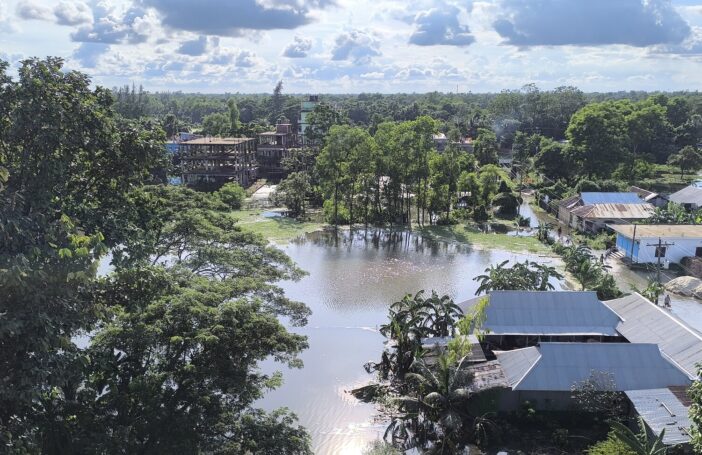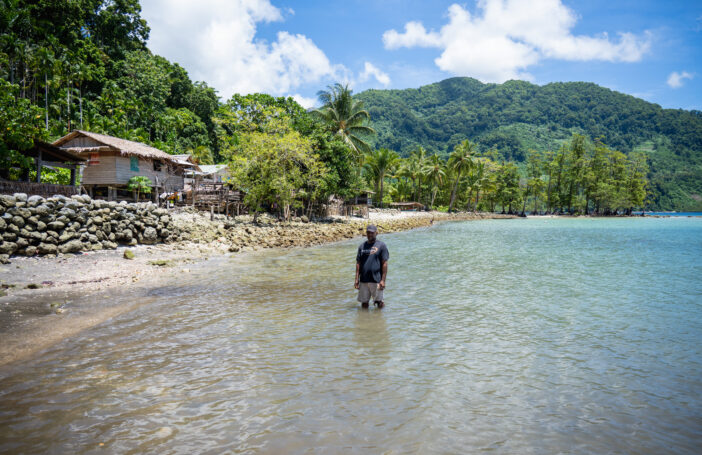In what looked like an early win for COP28, an agreement was reached on day 1 on the set-up of a new Loss and Damage Fund to help nations recover from climate change. So far US$429 million has been committed, more than half of it from the EU and a further US$100 million from the UAE, which is hosting the COP. There are only tiny amounts from the US and Japan. This is a drop in the ocean – just enough to get the fund up and running but not enough to make it useful as either a grant- or loan-making institution.
The recent revelations about COP president and UAE oil company chief Sultan Al Jaber’s views indicate the announcement was a political ploy to start the summit off on a positive note. Al Jaber said leading up to the COP that there “is no science out there” that a phase-out of fossil fuels is needed to achieve the limit of 1.5 degrees of warming, and it has been revealed he planned to use the summit to discuss possibilities for new fossil fuel investments.
The US requirement that contributions to the Fund be voluntary adds to the problems. In Australian and international discussions and consultations, there were proposals for an independent revenue stream for the Fund, in particular a bunker fuel tax and an airline fuel tax. Without such a stream, the Fund will be useless.
There are already too many climate and development funds – global leaders love to announce the creation of a new fund but there is too little follow through. The Loss and Damage Fund is part of the UNFCC architecture which already has the Global Environment Facility, the Green Climate Fund, two special funds and an adaptation fund. Plus, there are separate funds for carbon credits, national and regional funds, and a range of trust and special funds under multilateral development banks, especially the World Bank.
The transitional committee that negotiated the Loss and Damage Fund needed an emergency fifth meeting on 3-4 November to reach a compromise deal that left none of the transitional committee members happy. Australia was part of this committee, and promised to represent the views of Pacific Island nations. There is little to see from this, apart from the commitment to provide small grant funding directly to communities. Still, operationalising this equitably will prove difficult.
The agreement highlights the use of “innovative” financing mechanisms: “grants, highly concessional loans, guarantees, direct budget support and policy-based finance, equity, insurance mechanisms, risk sharing mechanisms, pre-arranged finance, performance-based programmes, and other financial products where appropriate”. The voluntary and small contributions could mean these mechanisms become the Fund’s dominant modality, or could just result in the provision of a lot of small, low-impact grants, which will be administratively expensive. A third alternative is the funds are used to prepare loans from multilateral development banks or other lenders.
A small, highly concessional loan fund is not likely to be sustainable. Shortfalls in replenishment financing are already impacting lenders reliant on replenishments – for example, the World Bank’s highly concessional lending arm, the International Development Association (IDA), is currently struggling. Plus there are shortfalls right now in funding for, or replenishments of, the Global Fund to Fight AIDS, TB and Malaria, the Green Climate Fund, the World Health Organization, and the Pandemic Fund. There are also huge gaps in climate adaptation funding for developing countries.
The key issue, though, is the idea that people with limited resources who, say, need to leave their homes permanently due to drought or rising sea levels, could be burdened with (more) debt. That is a very telling choice by world leaders. Further, in the face of an unfolding debt crisis, developing countries with debt issues will have limited lending capacity. Mechanisms like equity investments and risk-sharing loans often engage recipients in the system of risky, complex financial mechanisms that have been part of every global debt crisis of the past 50 years. Insurance mechanisms will simply not be able to deal with the scope of the emerging losses, and investors are already weary of the risk of bond issues to back them after the losses on the World Bank’s pandemic bonds issued pre-COVID.
As an interim measure, the Loss and Damage Fund will be administered by the World Bank. This was the cause of much contention, with developing countries wanting it under the UN and the US and its allies lining up behind the World Bank, where they control the votes.
This is a repeat of the 1950s debate about creating a highly concessional arm to improve access to development finance for the poorest countries. A proposal for a Special United Nations Fund for Economic Development was floated in 1952 and was initially opposed by the US and World Bank. Over time, the US shifted its views on a soft lending facility but wanted it under the World Bank, which was duly launched in 1960. The result was that the UN “became a residual organization in economic and social development programs”, while the World Bank expanded, becoming the dominant global development organisation. It also increased the World Bank’s reliance on the US because it remains the dominant contributor to IDA replenishments.
Locating the Loss and Damage Fund in the World Bank is a way of shoring up its pre-eminence in the wake of challenges like the growth of Chinese development finance and concerns that the past president David Malpass was a climate denier. It also expands the Bank’s reach in the climate space, despite important critiques of its climate record and profound questions about whether the World Bank can and should be the World Climate Bank.




